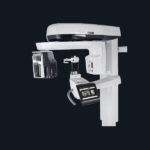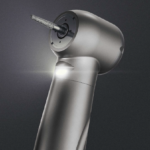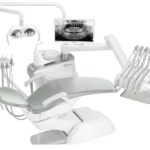
A colonoscopy procedure is an exam that helps the doctor to look for changes like swollen, irritated tissues, polyps, or cancer in the large intestine, or colon and rectum.
During this procedure, a doctor or healthcare professional will insert a long, flexible tube, i.e. colonoscope into the rectum of the patient.
Moreover, there is a tiny video camera at the tip of the tube.
This allows the doctor to view the inside of the entire colon.
If necessary, polyps or other types of abnormal tissues can also be removed through the scope during the colonoscopy procedure.
Tissue samples or biopsies can also be taken during a colonoscopy procedure as well.
Keep on reading.
Uses of Colonoscopy Procedure
It is important to note that the colonoscopy procedure is the main way in which doctors can investigate lower gastrointestinal symptoms like:
- bleeding from the rectum
- chronic constipation
- chronic diarrhea
- stomach pain or abdominal pain
Moreover, the medical community also considers colonoscopy the gold standard of colorectal cancer.
This type of cancer is one of the most common types in both men and women in the U.S.
With the help of a colonoscopy procedure, a doctor can detect early-stage colorectal cancer before symptoms develop.
Also, early detection can help improve treatment outcomes.
Furthermore, a doctor can recommend a colonoscopy for those who:
- have a first-degree relative with a history of colon polyps or colon cancer
- are at a higher risk due to their medical history
- aging 50 or above, even if no other risks are present
Learn more about Medical Supplies Dubai here.
Preparing for the Procedure
Cleaning the bowel is an important part of a successful colonoscopy procedure. A doctor can provide specific instructions on how to do this.
They can recommend:
Dietary Changes: The day before the procedure, it may be crucial to make some dietary changes like eating only a light breakfast and luch with no evening meal.
Or consuming a liquid diet only.
Clear liquids only: The doctor may ask the patient to drink only water, broth, and tea or coffee without milk the day before the procedure.
Laxatives: It is often necessary to take laxatives the day before the procedure, either in pill or liquid form.
In some cases, a person may also need to take them on the morning of the colonoscopy procedure.
Enemas: Some people may need to use an enema kit the night or on the morning of the procedure.
Showering or Bathing: It is good to take a shower or bathe before the examination.

Moreover, people who are taking medications or supplements should discuss these with the doctor’s healthcare provider.
The doctor may as them to stop taking certain medication temporarily or to adjust the dose.
It is particularly important to make the doctor aware of medication that:
- thin the blood like aspirin or warfarin
- contain iron
- are for diabetes, hypertension, i.e.e for high blood pressure, or heart problems
Learn more about Medical Items: Guide here.
Colonoscopy Procedure
A colonoscopy procedure often takes about 30 minutes to 60 minutes to complete.
However, people should allocate 2 to 3 hours to the procedure to allow for bowel preparation and recovery time.
Before the procedure, the person will receive a sedative, either in the form of a pill or intravenously.
During the procedure, the individual will wear a hospital gown and lie on her side on the examination table.
Then the doctor will insert the colonoscope into the rectum of the patient.

Moreover, the doctor may also use air or carbon dioxide to inflate the colon to facilitate a better view.
When this happens or when the doctor moves the colonoscope, the person may feel stomach discomfort or an urge to pass stool. This effect, however, is normal.
If the doctor decides that they need to take a biopsy or remove abnormal tissue, then will insert other instruments through the rectum.
What happens after the Procedure?
Once the doctor completes the procedure and examination, the individual will stay in a special recovery room until the sedative wears off.
It is important to note that the person should take the rest of the day off following the procedure.
It is unsafe to drive or work after a colonoscopy, so the person will need to arrange for someone to take them home from the hospital.
Moreover, a doctor or nurse will advise on how soon a person can eat or drink after the procedure, as well as how quickly they can return to their normal routine.
However, if the doctor performs a biopsy, they will advise on when the results will be available and whether further testing is necessary.
If the doctor removes abnormal tissue, they will explain any temporary dietary changes that are necessary for the patient.
Some minor discomfort like gas, bloating, or mild cramping is normal after a colonoscopy.
These symptoms often go away within 24 hours. Passing pass or walking around can help reduce discomfort.
Furthermore, small amounts of blood in the first bowel movement following the procedure are also normal.
However, it is important to consult a doctor in case the bleeding continues or the stool contains large amounts of blood or blood clots.
Cost of Colonoscopy Procedure
One of the important things to note is that the cost of the procedure can greatly vary.
It may also cost more if the doctor will need to remove an area of the abnormal tissues. While other factors influencing the cost are:
- the amount that the doctor charges
- type of facility where the procedure will take place
Medical insurance, moreover, may also cover all or part of the cost of the procedure.
Therefore, individuals should contact their insurer to find out more about it.
Medicare, for instance, covers colonoscopies once every 2 years for those at high risk of colon cancer.
It also covers procedures once every 10 years for those who are not at high risk.
Moreover, medical charge changes an additional fee if a doctor needs to remove an abnormal tissue during the procedure.
Learn more about Radiation Therapy: Types, Purpose, Side Effects, and More here.
Possible Risks of the Procedure
Colonoscopies rarely cause serious problems.
The American Society for Gastrointestinal Endoscopy reports that serious complications occur in approximately 2.8 out of every 1,000 procedures, i.e. 0.28% in people of average risk.
Moreover, the risk associated with a colonoscopy may increase if a biopsy.
Or abnormal tissue removal takes place, including bleeding and tears in the lining of the colon or rectum, i.e. perforation.
Sedation also carries risks, including:
- a decrease in breathing rate
- changes in heart rate
- nausea and vomiting

Is it Painful?
It is important to note that a colonoscopy is not a painful procedure as people generally have the procedure under sedation.
This makes them very sleepy and relaxed.
Due to the side effects of sedation, however, a person should not drive themselves home, as they would not be alert enough to drive safely.
After the procedure, people may experience mild discomfort for up to 24 hours.
Moreover, they may also develop mild stomach cramping, gas pains, and bloating.
In addition to mild discomfort they experience, bleeding may also occur if the doctor takes a biopsy or removes an abnormal tissue.
Learn more about Lipid Profile Test: Purpose, Preparation, and More here.
At what age can a person have a Colonoscopy?
It is important to note that people of any age can have a colonoscopy procedure, especially if their personal or family history tends to increase the risk of colorectal cancer.
Regardless of the risk factors, the Preventive Services Task Forces recommend that all ages from age 50 to 75 should undergo colorectal cancer screening like colonoscopy at least once every 10 years.
Moreover, people may also need more frequent screenings if other factors apart from age tend to increase their risk.

The American Cancer Society, ACS suggests that people at average risk should start regular screening even earlier than this, at the age of 45.
They also suggest that those in good health should continue screening through to the age of 75.
According to the ACS, th decision to undergo screening for those aged 76 to 85 depends on the preference, health, and life expectancy of the person.
Furthermore, they recommend that those above 85 years of age no longer get colorectal cancer screening.
What happens if there are abnormalities?
In case a doctor finds areas of abnormal tissue like polyps during the exam, they will often remove them and send them to the laboratory to determine whether they are:
- cancerous
- or benign i.e. noncancerous
Polyps are growths on the inner wall of the colon or rectum.
Most tend to be benign. If the doctor removes polyps or other abnormal tissue, they may further recommend regular repeat colonoscopies.
How frequently these should occur depends on the size of the polyps as well as other risk factors.
Final Thoughts
A colonoscopy is a common, important, and relatively safe screening examination that helps to investigate gastrointestinal issues and check for signs of colorectal cancer.
Individuals at higher risk for colorectal cancer and other adults will need regular colonoscopies to monitor their bowel health.
Moreover, the procedure is not painful, though it may cause mild discomfort for a day or so afterward.
Those who have queries about colonoscopy procedures should contact their doctor for more information.




